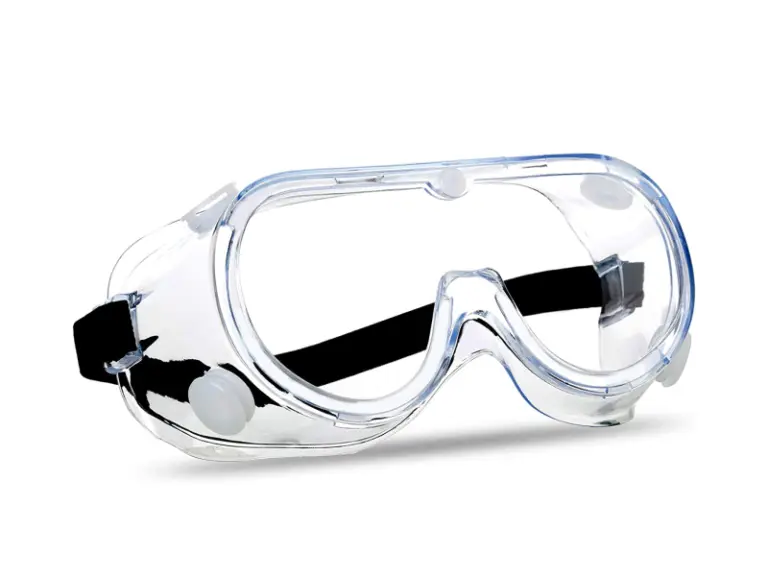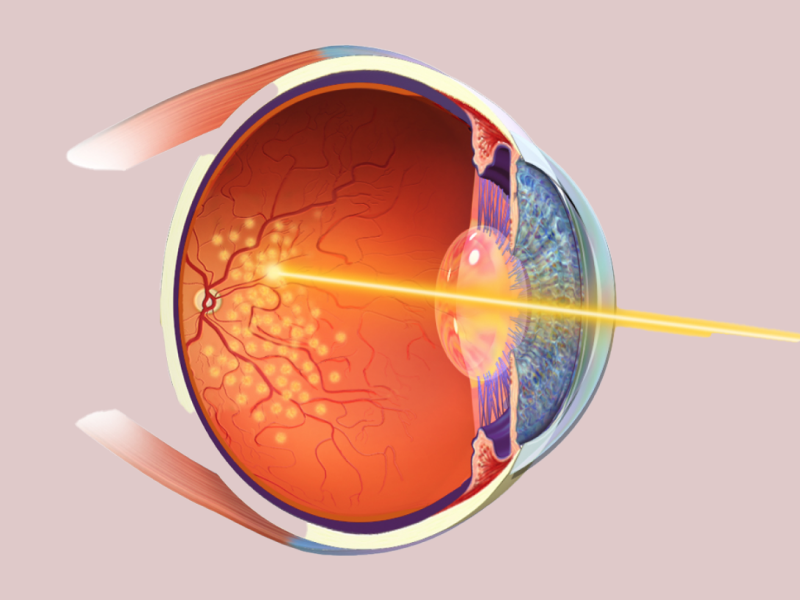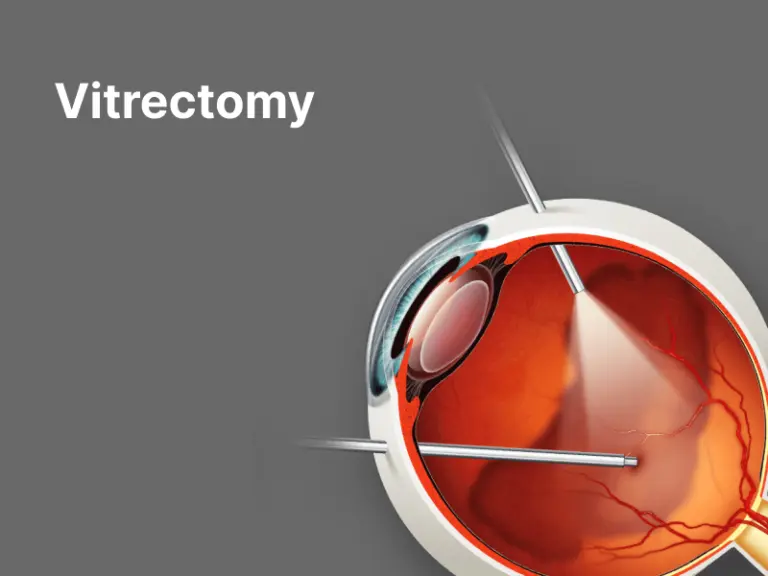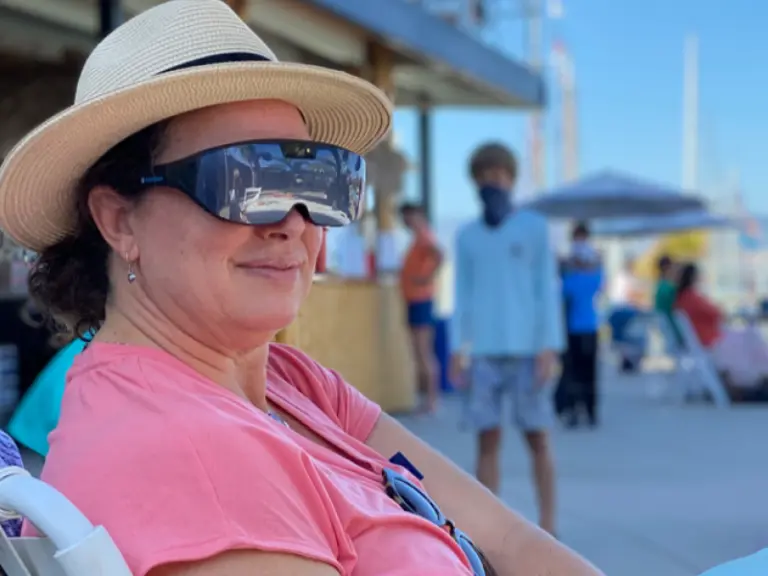
#LIVE2.0 #Review
Retinal detachment – the retina pulling away from the blood vessels – is a serious medical emergency. It can result in full or permanent vision loss, if left untreated.
Just hearing the name might put you in a spot. Is your retina going to fall out? How will my eyesight appear? Is the retina literally ripped out? These might be a few concerns for someone who doesn’t know about it.
What happens is that the retina, a light sensitive layer of the tissue in the back of the eye, is separated from its normal position. This happens suddenly, without a warning and leads to vision loss.
In all scenarios, eye health is an important matter that should be attended to at every age. It’s usually just assumed that with good habits and care, conditions can be prevented. This may be true in some situations, though. One risk factor for cataracts is sun exposure, so wearing sunglasses is one way of reducing the risk of getting cataracts.
However, to prevent retinal detachment, such measures aren’t available. The best that can be done is to manage the risks of retinal detachment by knowing why it happens and what to do when it does.
Before getting down to the ‘signs of retinal detachment’ and ‘how to prevent retinal detachment’, let’s talk about its types.
There are mainly three types of retinal detachment. Each happens for a specific reason.
This type of retinal detachment occurs when the retina is slightly torn away from the back of the eye. This is often linked to age. The gel-like fluid, vitreous, exists at the center of the eye. It’s a buffer of pressure that holds the ocular structure in place. With age, the vitreous becomes watery. This results in tugging that pulls the retina away from the lining of the eye. When a retinal tear occurs, the vitreous fluid leaks behind the tissue, causing it to separate from the base.
Tractional retinal detachment occurs when scar tissue forms on the retina. It’s a type of retinal detachment that’s more related to diabetes and the damage caused by it to the blood vessels in the eye. Fluid can seep on to and around the retina, causing the retina to separate from the back of the eye.
This occurs without a tear or scarring. It’s a far less common type of retinal detachment. It involves the accumulation of fluid behind the retina caused by leaking blood vessels or swelling behind the eye.
The risk of retinal detachment includes having a family history of this condition, eye injury, previous eye surgery, or simply aging. As the risks of retinal detachment are difficult to control, eye doctors focus on recognizing the signs of detached retina. There are:


Before retinal detachment actually happens, there is one cause of retinal detachment that should be on the lookout for: Retinal Tears.
Retinal tears are dangerous on their own, and often lead to retinal detachment – an eye emergency that can cause blindness. But prompt treatment can prevent the retinal tear from evolving into a retinal detachment.
Retinal tears are quite common and occur with age when the vitreous changes texture and pulls on the retina, tearing a small piece of it away from the back of your eye.
The risk of retinal tear or detachment only increases with age. Yet, if you have severe myopia (nearsightedness) or have had eye surgery or injury, you’re at a higher risk.
Retinal tears deplete your retina of oxygen, resulting in irreversible eyesight loss and damage. Detachment occurs when fluid seeps under the retina due to a tiny tear..
Almost all of us experience floaters, those gray or transparent specs across our vision. Mostly you only see one or two. But a sudden increase in floaters signifies a retinal tear or detachment. Other signs, like light flashes or veils over your vision, sudden blurry vision, or decreased peripheral vision, should be relayed to your eye doctor immediately.
To prevent retinal tears from progressing, you should keep your eyes protected and take care of your overall health to ensure conditions like high blood pressure and diabetes are under control.
To prevent retinal detachment and other eye health problems, it’s imperative to prevent eye injuries as much as possible. For example, wear protective goggles when working on a DIY project or while doing activities that involve small objects flying around (possibly into the eye). It also means protecting your eyes when using guns of any description or participating in fireworks shows. Similarly, when taking part in sports like baseball, lacrosse, hockey, boxing, etc., it’s important to protect your eyes from direct blows that may cause retinal detachment.

If a tear is present, you will likely be examined and a treatment plan will be decided, depending on the type of tear and other medical conditions.
A repair of any tear present may be done to prevent retinal detachment. This is usually done through laser photocoagulation or cryopexy. The laser energy is supplied to heat the retina up by the absorption of light, inducing coagulation necrosis. In cryotherapy, a cryoprobe is applied to the eyeball to freeze the retinal tissue.

Laser photocoagulation for Retinal Detachment
Both techniques are aimed at scar formation, leading to reattachment of the retina at the back of the eye, provided both layers are intact. If macular detachment occurs, it may be impossible to regain central vision.
Other treatments to prevent retinal detachment include:

With the help of modern therapy, over 90 percent of the people with retinal detachment can be successfully treated, though there’s a chance of a second treatment. Yet, the visual outcome is not predictable. The final verdict on the visual result may not be known for up to several months following surgery. Even with multiple attempts at repair, treatment may fail, and vision loss can occur.
What does one do when all treatments fail? After more than two surgeries, people may experience vision loss and struggle with day-to-day living. To overcome such obstacles, there are low vision aids for retinal detachment.
Low vision aids for retinal detachment include a number of assistive devices to help with routine activities. These help in maintaining personal independence and making the best use of the existing vision.
Some low vision aids can perform specific tasks at a particular visual distance. These can be:
Among all these visual aids, IrisVision Inspire is among the award-winning software with light-weight low vision wearable glasses. It offers a range of modes and navigation options that make it a great low vision aid for retinal detachment.
IrisVision Inspire is an easy-to-use assistive vision device, combining state of the art hardware and software to enhance daily life activities of people with visual impairments.

As a result of retinal detachment, vision loss and low vision start to take root. Blurred vision causes difficulty seeing or reading properly. Curtain vision blocks the peripheral views. Nearsightedness becomes even more troublesome.
After taking steps to prevent retinal detachment, along with visual therapies, IrisVision Inspire can be used. It provides the following options:
Allows the user to enjoy a high-definition view along with a built-in instant auto-focus feature. It zooms up to 14X magnification, which makes seeing things clearly for people with retinal detachment easier.
IrisVision Inspire is the only assistive technology with a dedicated RP Mode. It is specifically designed for people who have retinitis pigmentosa, however, it is also extremely beneficial for people who have peripheral vision loss due to retinal detachment.
The software lens allows the user to adjust their field of view (FOV) to fit the entire scene within their visual frame. It removes all field restrictions in order to improve the vision of people who have lost their peripheral vision.
Other features of this visual aid for retinal detachment, that may benefit people, include:
IrisVision Inspire is a step one should take to counter the aftereffects of preventive retinal detachment treatments. It removes any field restrictions and allows people with retinal detachment to live independently.
Support
See and Connect Today!
IrisVision Global, Inc.
5994 W. Las Positas Blvd, Suite 101
Pleasanton, CA 94588
Email: [email protected]
Support: +1 855 207 6665
Support
See and Connect Today!
IrisVision Global, Inc.
5994 W. Las Positas Blvd, Suite 101
Pleasanton, CA 94588
USA Email: [email protected]
Support: +1 855 207 6665
Support
See and Connect Today!
IrisVision Global, Inc.
5994 W. Las Positas Blvd, Suite 101
Pleasanton, CA 94588
Email: [email protected]
Support: +1 855 207 6665